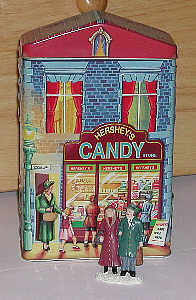
The embossed figures on the tin are drawn for the illusion of perspective. Placing figures too close makes them embossed figures look larger. Stepping the loose figures forward helps a little.
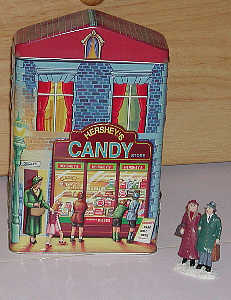
Placing figures forward and sligthly to the side of the embossed scene works better, as it does not interfere with perspective.
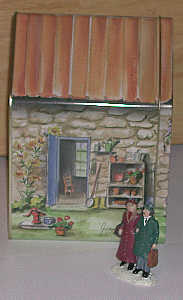
Placed by the image of the side door, this couple looks about right. Door height and width are actually a tad tight for figures this size. We use perspective effectively by placing figures a couple of inches forward of the building.
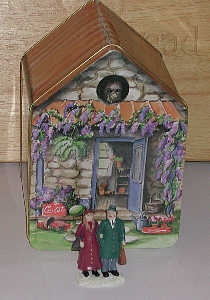
Though the door is the right height for our figures, its perspective and placement is taller, thus making them look small. It also looks too wide. If placed within the door area, as above, the perspective appears to be wrong.
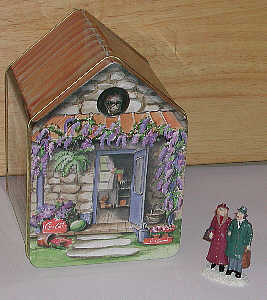
Placing figures forward and to the side, the figures look just right.
Always be on the lookout for reference points that will upset the illusion of perspective. Offsetting the effect of a reference point is a matter of placing piece obliquely rather than in direct line. Angular offsetting is an easy and effective way to mitigate a reference point in most cases. Of course, there will be situations where it cannot be done effectively, and so you must settle with minimizing rather than offsetting.
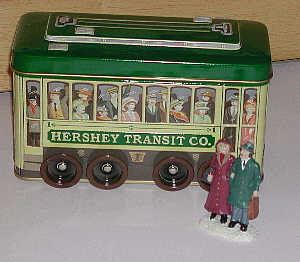
Our trolley is about the right size for our people, based on embossed figures "inside" the vehicle. Placement by the door is acceptable. However, if the "trolley people" or vehicle scale were slightly larger than out figure scale, we would not want to place them as we did

Scale or not, placement of figures obliquely to the trolley works. Figures are not directly outlines by a reference point, such as a door or "trolley rider."